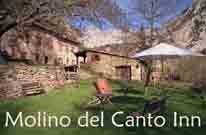My second square-
VN 3040- for the Breeding Bird Survey
has reported a total of
48 different species of birds, a number similar to other years and to the other squares that I make,
VN 4040, a number of birds that can seem small, but this is obtained in only four hours and by habitats little varied.

In this second square, again the river Ebro and the moor is the principal habitats, although the cliffs of the canyons of limestone are very abundant.

Again, several migratory birds that have arrived, in this square have been seen are outstanding the Common Swift and Alpine Swift, this one an amazing bird.
1.Black Kite (Milvus migrans)
2.Common Buzzard (Buteo buteo)
3.Great Tit (Parus major)
4.Blue Tit (Parus caeruleus)
5.Coat Tit (Parus ater)
6.Wood Pigeon (Columba palumbus)
7.Great Spotted Woodpecker (Dendrocopos major)
8.Green Woodpecker (Picus viridis)
9.Common Cuckoo (Cuculus canorus)
10.Dunnock (Prunella modularis)
11.Carrion Crow (Corvus corone)
12.Magpie (Pica pica)
13.Jay (Garrulus glandarius)
14.Wren (Troglodytes troglodytes)
15.Song Thrush (Turdus philomelos)
16.Mistle Thrush (Turdus viscivorus)
17.European Robin (Erithacus rubecula)
18.Blackbird (Turdus merula)
19.Black Redstart (Phoenicurus ochruros)
20.Firecrest (Regulus ignicapillus)
21.Blackcap (Sylvia atricapilla)
22.Garden Warbler (Syvia borin)
23.Ibarian Chiffchaff (Phylloscopus ibericus)
24.Bonelli´s Warbler (Phylloscopus bonelli)
25.Eurasian Bullfinch (Pyrrhula pyrrhula)
26.European Serin (Serinus serinus)
27.European Greenfinch (Carduelis chloris)
28.European Goldfinch (Carduelis carduelis)
29.Common Chaffinch (Fringilla coelebs)
30.Short-Toed Treecreeper (Certhia brachydactyla)
31.Rock Sparrow (Petronia petronia)
32.House Sparrow (Passer domesticus)
33.Eurasian Golden Oriol (Oriolus oriolus)
34.Common Swift (Apus apus )
35.Alpine Swift (Apus melba)
36.Common Skylark (Alauda arvensis)
37.White Wagtail (Motacilla alba)
38.Grey Wagtail (Motacilla cinerea)
39.Tree Pipit (Anthus trivialis)
40.Spotless Starling (Sturnus unicolor)
41.Cirl Bunting (Emberiza cirlus)
42.Yellowhammer (Emberiza citrinella)












 The province of Burgos is not characterized to have many wetlands, but the few that it has are really interesting.
The province of Burgos is not characterized to have many wetlands, but the few that it has are really interesting.





























 List of species recorder in the routes:
List of species recorder in the routes:




















